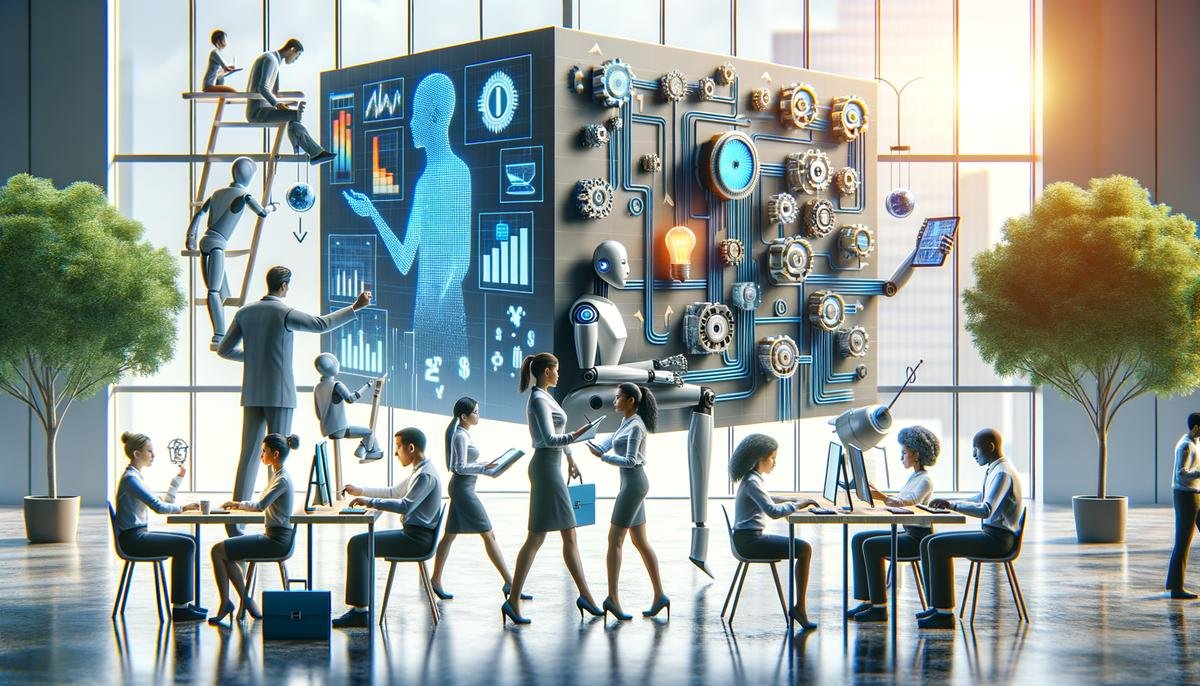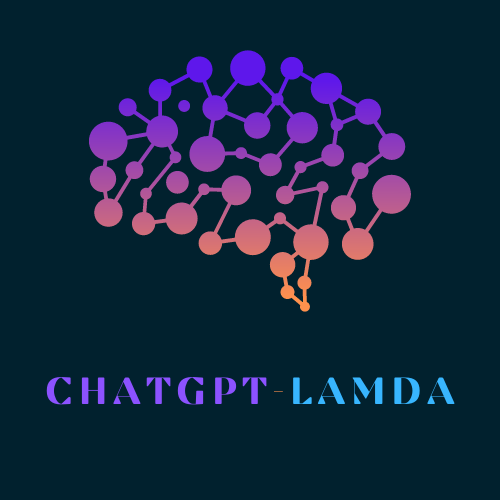Understanding the AI Talent Shortage
The swift rise of AI, data science, and analytics within business spotlights a widening talent gap. Fast-paced advancements in AI outpace traditional educational programs, creating a mismatch between graduates' skills and industry demands.
AI's intricacy requires specialized knowledge. Many programs lack comprehensive coverage of advanced AI concepts, focusing instead on basic theories and principles. Graduates entering the workforce find themselves ill-equipped for real-world applications, unable to design, develop, or deploy advanced AI.
Industry partnerships can bridge this gap, providing insight into emerging trends and technologies. Educational institutions can adjust their curricula based on industry needs, making programs more relevant and up-to-date.
Hands-on learning opportunities, such as internships and project-based courses, offer practical experience. These experiences allow students to apply theoretical knowledge in real-world settings, improving their employability. Continuous professional development is key, given AI's rapid evolution. Workshops, seminars, and online courses ensure professionals stay current.
Curriculum modernization is crucial. Incorporating cutting-edge AI concepts, methodologies, and tools fosters a deeper understanding. Interdisciplinary approaches that integrate AI with fields like computer science, mathematics, and engineering enhance this understanding, preparing students for diverse AI applications.
Promoting diversity and inclusion in AI education broadens the talent pool. Encouraging underrepresented groups to participate, with support systems in place, creates a more diverse and innovative AI workforce.
By understanding these challenges and implementing targeted strategies, industries and educational institutions can work together to address the talent shortage. This collaboration is essential to develop a skilled workforce capable of driving innovation in AI and staying ahead in the competitive landscape.
Role of Education in Shaping Future AI Talent
Incorporating interdisciplinary approaches is another crucial strategy. AI intersects with various fields such as computer science, mathematics, engineering, and even business. A curriculum that weaves these disciplines together encourages a more holistic understanding. For instance, combining AI with business studies can cultivate professionals who develop AI solutions and understand their commercial applications and implications. Similarly, integrating AI with engineering can produce talent skilled in creating hardware and systems optimized for AI functionalities.
Fostering industry-academia collaboration is key to aligning educational programs with industry needs. Collaborations between educational institutions and industry players can lead to mutually beneficial partnerships. For example, companies can provide insights into the latest industry trends and skill requirements, ensuring that academic training is relevant and up-to-date. Such partnerships can facilitate internships, co-op programs, and project-based courses that give students hands-on experience with AI technologies.
These collaborative efforts extend beyond the classroom. Industries can contribute by participating in curriculum design, guest lectures, and offering practical projects that provide real-world challenges for students. Such interactions ensure that graduates understand theoretical concepts and acquire the practical skills crucial for their professional success.

Re-Skilling the Existing Workforce
AI-driven training programs play an indispensable role in re-skilling the existing workforce. As AI technologies rapidly evolve, the need for continuous learning and professional development becomes more pressing. This constant adaptation is essential for keeping pace with technological advancements and maintaining a competent and competitive workforce.
Lifelong learning is the cornerstone of staying relevant in the AI domain. For employees, this means continuously updating their knowledge base and skill sets through:
- Formal education
- Online courses
- Workshops
- Seminars
AI technology itself can facilitate this continuous learning process. AI-driven platforms can suggest learning paths based on an individual's current skill set, job role, and career aspirations, creating an optimized learning experience that is relevant and engaging.
Professional development varies greatly depending on individual and organizational needs. AI-powered analytics can help identify specific skill deficiencies within an organization, allowing for targeted training initiatives. For example, through performance metrics and feedback analysis, AI can highlight areas where employees might require further development, enabling organizations to address these gaps more effectively.
Customized training programs are particularly beneficial in this regard. AI can personalize training modules to fit the learning pace and style of each employee. For instance, adaptive learning platforms can create dynamic learning environments that adjust in real-time to a learner's progress, ensuring that knowledge retention is maximized while keeping the learner engaged. This personalized approach is superior to traditional, static training methods that fail to address individual learning needs.
AI-driven training programs can actively simulate real-world scenarios, providing hands-on experience that traditional training programs often lack. These simulations enable employees to apply theoretical knowledge in practice, enhancing their problem-solving abilities and increasing their competence in handling complex AI-driven systems. This experiential learning significantly boosts their readiness to tackle real-world challenges.
The implementation of AI in professional development also extends to predictive analytics, which can forecast emerging skill requirements based on industry trends and technological advancements. This foresight allows companies to proactively prepare their workforce for future demands, ensuring that employees are continually evolving alongside the technology they work with.
Re-skilling the existing workforce through AI-driven training programs benefits individual employees and strengthens the organization as a whole. By investing in continuous learning and professional development, businesses can ensure that their workforce remains adaptable, skilled, and ready to drive AI innovation in an ever-changing technological landscape. This proactive approach to workforce development is crucial for maintaining a competitive edge and fostering a culture of continuous growth and adaptation.
The Power of Diversity in AI Innovation
Diversity and inclusion in AI innovation cannot be overstated. The incorporation of diverse perspectives drives creativity, leading to groundbreaking AI solutions that are innovative, equitable, and effective across different contexts. Encouraging participation from underrepresented groups in AI is thus essential for fostering a vibrant, dynamic, and innovative AI ecosystem.
One of the primary benefits of diversity in AI is enhanced problem-solving. Teams composed of individuals from varied backgrounds bring unique viewpoints and approaches to the table. This diversity in thought processes leads to more comprehensive and robust AI solutions. For instance, a multicultural team can better anticipate and address potential biases in AI algorithms, ensuring that the technology serves a broader audience fairly and ethically. Such teams are also more likely to challenge prevailing assumptions, pushing the boundaries of traditional AI methodologies and leading to transformative breakthroughs.
Diversity promotes a broader understanding of AI applications and their implications. A workforce that reflects a wide range of experiences and cultural insights is better equipped to develop AI technologies that are sensitive to the needs and nuances of different communities. This relevance and sensitivity are crucial for AI tools intended for global deployment, as they enhance user acceptance and efficacy across diverse populations.
To harness the power of diversity in AI innovation, targeted initiatives must be implemented to encourage the participation of underrepresented groups. One effective strategy is creating pipeline programs that start at the educational level. Scholarships, mentorship programs, and partnerships with organizations focused on diversity can provide support and resources for students from marginalized backgrounds pursuing AI-related fields. Exposure to role models and mentors who have traversed similar paths can be particularly inspiring and motivating for young aspirants.
Creating an inclusive environment within academic and workplace settings is equally important. Institutions and companies must foster cultures where all voices are heard and valued. This can be achieved through diversity training programs, inclusive hiring practices, and policies that ensure equity in opportunities for advancement. Diverse teams thrive in environments where inclusivity is more than a policy but a practiced norm, encouraging collaboration and mutual respect.
Support systems tailored to the unique challenges faced by underrepresented groups can make a significant difference. These systems might include peer-support networks, affinity groups, and access to mental health resources that address specific stressors related to traversing predominantly homogeneous environments. Inclusivity goes beyond mere representation; it involves creating spaces where everyone feels comfortable and empowered to contribute their best work.
Organizations can create platforms for diverse voices in AI conferences, journals, and speaking engagements. Highlighting research and projects by underrepresented groups acknowledges their contributions and inspires others to pursue similar paths. This visibility can create positive feedback loops, encouraging more diversity in the field over time.
Promoting diversity and inclusion within the AI sector ultimately leads to richer, more effective innovation, benefiting society as a whole. A diverse AI workforce can better address global challenges, ensuring that AI technologies are equitable and beneficial for all. By strategically encouraging and supporting diversity, we pave the way for a future where AI innovation is driven by a multitude of voices, each shaping a more inclusive and progressive technological landscape.

Developing a Sustainable Talent Pipeline
Building a sustainable talent pipeline is essential for addressing the AI talent gap and ensuring a steady influx of skilled professionals. This involves integrating internships, mentorships, and experiential learning opportunities into the educational framework and leveraging industry partnerships to provide practical skills and exposure. These elements collectively equip aspiring professionals with the tools they need to thrive in an AI-driven industry.
Internships play a crucial role in bridging the gap between theoretical knowledge and practical application. They provide students with hands-on experience, allowing them to apply what they've learned in real-world scenarios. During internships, students gain insights into the day-to-day challenges of working with AI technologies, enhancing their problem-solving skills and understanding of industry workflows. Internships offer employers an opportunity to evaluate and nurture potential future employees, creating a seamless transition from education to full-time employment.
Mentorship programs complement internships by providing guidance and support from experienced professionals. Mentors can share invaluable industry insights, offer career advice, and help mentees traverse the intricacies of their roles. This support system accelerates the learning process and helps build confidence and professional networks. Mentorship fosters a culture of continuous learning and development, encouraging mentees to stay engaged and motivated in their career pursuits.
Experiential learning opportunities, such as project-based courses and co-op programs, further augment the educational experience. These programs immerse students in real-world projects, encouraging them to collaborate, innovate, and apply their theoretical knowledge in practical settings. Such experiences are instrumental in developing the critical thinking and technical skills required to excel in AI-related roles. They provide a platform for students to showcase their abilities and gain recognition from potential employers.
Industry partnerships are pivotal in enhancing these experiential learning opportunities. By collaborating with educational institutions, companies can help design curricula that are aligned with current industry needs. They can provide resources, technologies, and expertise that enrich the learning experience. For instance, companies can sponsor competitions, hackathons, and workshops that challenge students to solve real-world problems using AI technologies. These engagements enhance students' skills and expose them to the latest industry trends and tools.
Industry partnerships can facilitate access to cutting-edge infrastructure and software, which might otherwise be out of reach for educational institutions. Such access ensures that students are trained on the latest platforms and technologies, making them more job-ready upon graduation. In return, companies benefit by tapping into a pool of well-prepared and skilled individuals who can contribute immediately to their projects and initiatives.
Developing a sustainable talent pipeline also involves creating opportunities for continuous professional development. Companies can offer workshops, seminars, and online courses that enable employees to stay abreast of the latest advancements in AI. These programs help in up-skilling and re-skilling the workforce, ensuring that employees remain competitive and capable of driving innovation.
Establishing a sustainable talent pipeline requires a collaborative approach that involves educational institutions, industry players, and the broader community. By fostering internships, mentorships, and experiential learning opportunities, and by strengthening industry partnerships, we can cultivate a robust and dynamic AI workforce. This strategic investment in talent development is crucial for sustaining innovation and maintaining a competitive edge in the rapidly changing AI landscape.
The Future of Work in an AI-Driven Economy
The integration of AI into various industries is significantly transforming the job landscape. AI drives automation in repetitive and routine tasks, allowing human workers to focus on more strategic, creative, and complex functions. This shift in job roles can result in higher job satisfaction and productivity as workers engage in more intellectually stimulating tasks.
Employers must acknowledge the interdependent relationship between AI and human workers. Businesses should invest in upskilling and reskilling programs to prepare their workforce for these changing roles. Training initiatives should emphasize both technical skills, such as coding, data analysis, and AI system management, and soft skills, like problem-solving, critical thinking, and adaptability.
Employee engagement in continuous learning is essential for adapting to an AI-driven economy. Workers should actively pursue professional development opportunities, aiming to acquire new skills that align with emerging job roles. Embracing a continuous learning mindset will help workers remain relevant and open up new career paths.
AI will inevitably lead to the creation of new job categories. Fields like AI ethics, auditing, and policy-making are gaining importance as companies navigate the ethical and regulatory landscapes of AI deployment. Additionally, roles focused on the integration of AI within existing systems, user experience design for AI-driven applications, and system maintenance are expected to increase.
To foster a collaborative ecosystem, businesses should promote a culture of inclusivity and teamwork, where human intelligence and AI capabilities coexist harmoniously. Encouraging cross-functional teams to work together on AI projects can yield richer insights and more innovative solutions.
It is also crucial to address the ethical concerns associated with AI. Businesses should implement AI governance frameworks that ensure transparency, fairness, and accountability. Employees should be educated about the ethical implications of AI and trained to recognize and mitigate potential biases in AI systems.
Preparation for future job roles also involves embracing a flexible and adaptive workforce model. Gig work, remote work, and hybrid work arrangements are becoming more prevalent as companies harness AI-driven tools for project management and collaboration. Businesses should support these new work models by providing the necessary infrastructure and ensuring that gig and remote workers have access to the same training and development opportunities as their in-house staff.
Employees, in turn, may need to develop skills in remote working technologies, project management, and self-discipline. They should also stay informed about market trends and emerging AI technologies that may influence their roles and industries. Networking with professionals in the AI field and participating in relevant communities can provide valuable insights and opportunities for career growth.

By understanding the challenges and implementing targeted strategies, industries and educational institutions can work together to address the talent shortage. This collaboration is essential to develop a skilled workforce capable of driving innovation in AI and staying ahead in the competitive landscape.



